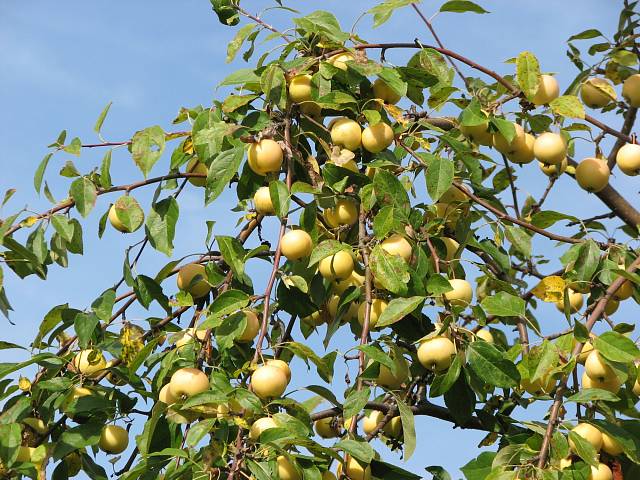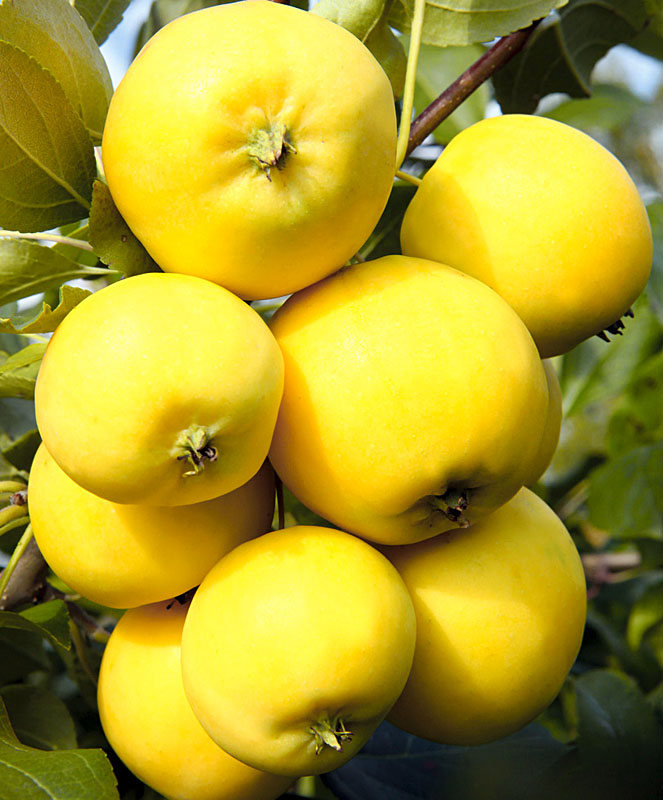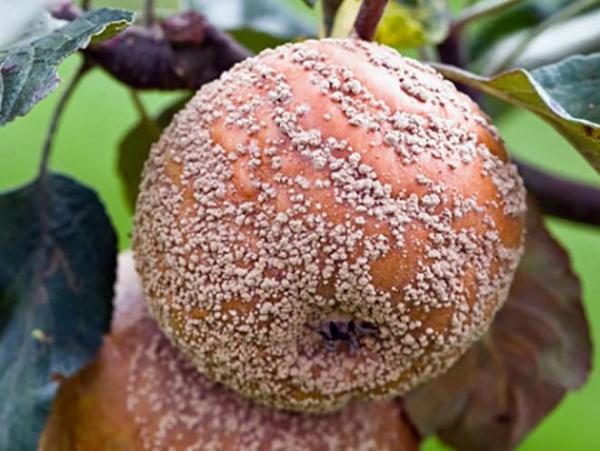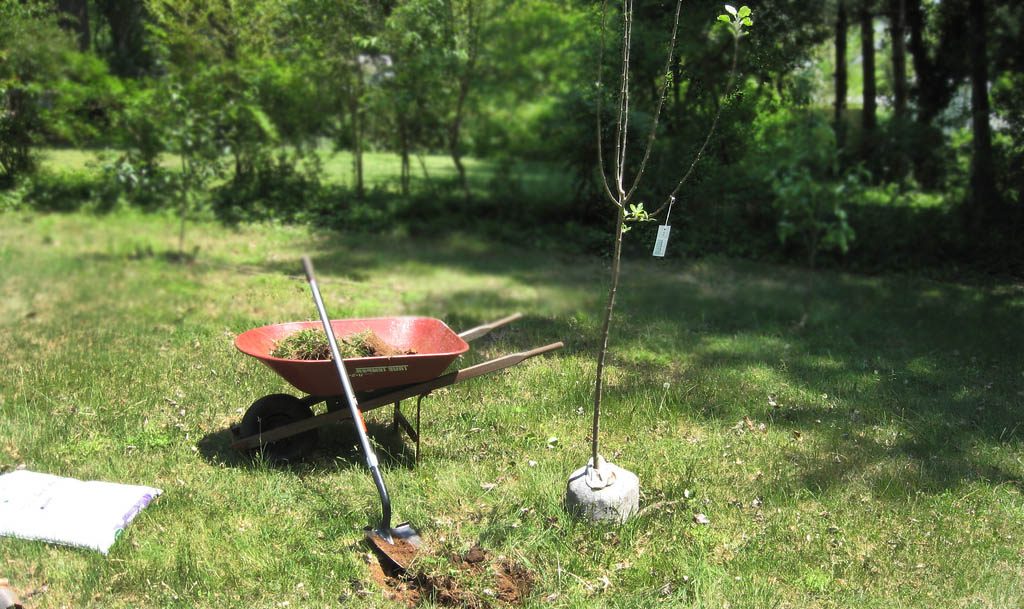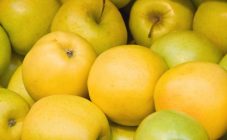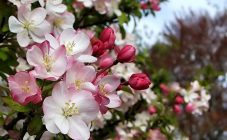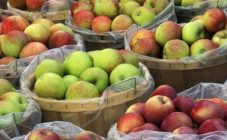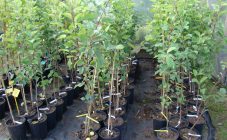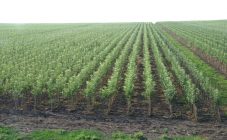Apple-tree Uralskaya is an autumn variety that was obtained in Chelyabinsk in 1949. The Ural apple tree was the result of crossing such trees as red Ranetka and Papirovka. The variety appeared thanks to a breeder from Chelyabinsk - Professor P.A.Zhavoronkov. This variety of fruit trees is famous for its good fruiting and resistance to harsh climatic conditions.
Ural bulk apple-tree description
Apple tree description
The Ural apple-tree is classified by experts as semi-cultivated varieties. The tree's strength can be defined as average. If you graft a stalk of this apple tree on the same rootstock with other varieties, then it either suppresses or outstrips other grafted plants. In the spring, the apple tree is one of the first to actively grow and dissolve foliage. The shape of the crown is round, under the weight of the fruit, the branches lean to the ground, as a result of which the tree looks drooping. A large amount of foliage makes the crown prone to thickening. As a result, it is necessary to form a beauty apple tree. For this, special attention is paid to pruning the crown.
Characteristics of shoots
Shoots are characterized by a green-brown color. Shoot thickness is usually medium.
The main features of the leaves
The leaves are elongated, light green, no pubescence, edges with small teeth.
Flower size and shape
The size of the flowers is medium, the color is pink, the shape is small-chalky and has a column of pistils, which are not pubescent, with an average length. The anthers and stigmas of the pistils are at the same height.
Characteristic features of the fruit
Apples in taste and external characteristics resemble the parent - the Papirovka apple tree. The size is small, even smallish, which is typical for Ranetki. The maximum apple weight of young apple trees is 60 grams, and even less in adult trees is 40 grams. The peel is yellow in color, with small green blotches in unripe fruits, and ripe apples are yellow with a rosy blush from the sun.
The skin is smooth and shiny at first, but takes on an oily coating during maturation. The palatability is pleasant, the fruits are sweet, but slightly sour. Under the skin is a delicate and the same yellow pulp, which has a characteristic delicate apple aroma.
The pulp changes its properties during ripening. There are three such stages. The first corresponds to mid-September, when the apple is still firm and contains a lot of juice. The second stage occurs at the end of September, when the fruit is ready for consumption, its pulp becomes softer. The third phase begins in October, apples already acquire a loose consistency of pulp and sweet taste. Such fruits are best suited for preparing various blanks.
Fruiting periods and yield
The Ural bulk apple tree is characterized by early fruiting, since the first apples appear already in the second year after they were grafted. The trees are stable and bear fruit every year. Since the variety is actively bearing fruit, the branches tend to break. One tree brings at most 250 kilograms of harvest. Frost resistance is very high (trees can withstand up to -57 degrees!), While the plants' ability to recover is amazing.
Diseases of this variety
The variety is moderately resistant to scab. Under unfavorable conditions, it is susceptible to this disease. The scab first affects the leaves, then passes to the fruit. This fungus appears mainly due to stagnation of air in the crown of an apple tree or excessive moisture.
According to gardeners, trees are at times susceptible to damage from moniliosis and are susceptible to sunburn.
Ural apple tree: planting and care
Pollination process
The plant belongs to hybrids, therefore it needs pollination. To do this, no further than five meters, another apple variety should be planted, which will serve as a pollinator. It should bloom at a time suitable for the Ural apple tree.
How to plant a Ural bulk apple tree
An apple tree of this species reproduces by planting seedlings or grafting. Planting is best done in the autumn, as the growing season occurs early. The choice of the landing site is made on the basis that drafts are unacceptable, it should warm up well. It is necessary to plant the plant in a hole, measuring 70 by 80 centimeters. A substrate is placed at the bottom, which is enriched with fertilizers (horse manure, wood ash, superphosphate, potassium sulfate). The roots of the tree are covered with earth. The seedlings are tied to a peg for stability.
What care does a tree need
Since the apple tree bears fruit abundantly, the branches tend to break under the weight of apples. In order to prevent this, it is necessary to install supports.
When looking after trees, they must be pruned every year. This is necessary to get rid of dead and old branches, as well as thickening shoots. These actions contribute to better ventilation of the crown and normalize the yield. To prevent the incidence of diseases, plants are sprayed with insecticides and fungicides. For the winter period, the roots should be insulated, and the trunk should be protected from rodents.
Pros and cons
Variety advantages:
- a fairly large number of apples are collected from one tree;
- perfectly tolerates low temperatures in winter and then quickly recovers;
- fruits appear early and delight gardeners with a stable harvest;
- they are eaten both fresh and in the form of preparations.
Disadvantages of an apple tree:
- fruits are small in size;
- branches often break under the load of apples;
- often the quality of fruits and health of trees deteriorate, the reason for this is possible diseases.
Gardeners recommend this variety if the climate does not allow growing other trees. Thus, the Uralskaya bulk apple tree has established itself as a frost-resistant and high-yielding tree. The fruits are also a plus of this plant, since they are small in size, but have excellent taste, they are suitable for canned storage.
